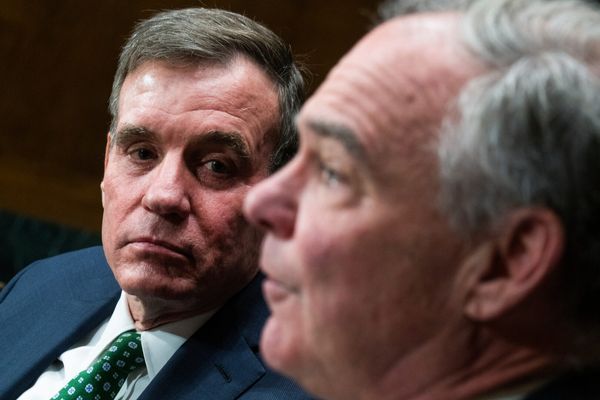
It was just 12 months ago when Labor under Anthony Albanese was unexiled from opposition with vows to end the climate wars, dig up lithium, electrify everything, protect the koalas and assemble a new green manufacturing workforce to make Australia a global renewable superpower.
His government is certainly good at highlighting the challenges ahead. Climate change was framed in Tuesday’s budget as one of three significant “structural shifts” that will have a major bearing on the economy in coming years, but which will also offer Australia “major opportunities”.
However, the budget hardly delivered the ambitious climate agenda Assistant Treasurer Stephen Jones teased us with last week — more a slow-burning one. Somewhat ironically, the federal budget’s surprise $4.2 billion surplus was mostly off the back of soaring climate-polluting commodity prices amid Russia’s invasion of Ukraine.
Here are all the budget policies that’ll help or hinder the climate.
The petroleum resources rent tax
The PRRT is a 40% tax on offshore sale profits of crude oil, gas, condensate, liquified petroleum gas, ethane, shale oil and more, but it’s raised peanuts for the government because of generous tax concessions that allow companies to carry forward the expense of exploring gas fields.
It’s seen producers accumulate $284 billion in credits, a hefty figure turbocharged by the fact that credits have been permitted to rise by 5-15% above the long-term bond rate. Not exactly chump change.
On Monday, Treasurer Jim Chalmers grandly announced a pre-budget policy where offshore fossil fuel giants can write off only 90% of their assessable income as a deduction — putting $2.4 billion into the coffers. Finance and energy analyst Tim Buckley said the “marginal reforms” were a “serious case of fiscal policy under-reach”, forecasting the tweak would pull forward a measly $600 million extra a year over the forward estimates.
“This looks very pedestrian relative to the LNG export industry’s windfall war-profiteering and oversized contribution to Australian domestic energy price hyperinflation,” Buckley, the director of independent think tank Climate Energy Finance, said.
Or as outspoken Greens Senator Nick McKim put it: “Labor is raising more from student debt than gas giants.”
National Net Zero Authority
The budget earmarked $83 million for a new agency that will steer our ambitions to slash our emissions by 2030 and to reach net zero by mid-century, known as the National Net Zero Authority (NNZA).
The NNZA’s agenda will be three-fold, Climate Minister Chris Bowen said: get fossil fuel workers into greener jobs fast; work on programs to support regions and communities to go green; connect big investment to worthy green projects.
It was tentatively welcomed by stakeholders, including ACTU president Michele O’Neil who said the NNZA was an “important victory for Australia’s energy workers, their families and communities, and for the climate” because it created a “sturdy bridge” to the clean energy future.
The budget also revealed how the $1.9 billion Powering the Regions fund will be divvied up: $400 million for the industrial transformation stream; $600 million for the safeguard transformation stream for trade-exposed facilities in the safeguard mechanism; $400 million for the critical inputs to clean energy industries stream to support decarbonisation of steel, cement, aluminium and more.
Energy bill relief
About 5 million people will get up to $500 in energy bill relief, including pensioners, veterans, seniors and other concession card holders, recipients of the carer allowance and family tax benefit, and anyone eligible for state electricity concession schemes.
However, not all states and territories are treated equally. People in WA, NT or the ACT will get only up to $350 off — the government said it had scaled the maximum relief to reflect places in Australia experiencing the highest power price rises.
“Because of our policies, electricity price increases are expected to be around 25 percentage points less than what was projected — and 16 percentage points less for gas,” Chalmers said.
The $3 billion package, which will be reflected in power bills from July 1, is co-funded by the federal government and state governments — though that didn’t stop Chalmers from taking most of the credit as part of a suite of cost-of-living measures in his budget.
Electrify homes and businesses
Small business will get a tax break of up to $20,000 for installing solar panels, electrifying their cooling and heating, installing batteries and heat pumps, and investing in induction cooktops to replace gas as part of the $314 million small business energy incentive.
Some 3.8 million businesses with turnover up to $50 million will be entitled to a bonus 20% tax deduction on batteries and other electrical devices when they invest up to $100,000 to swap out fossil fuel energy and technology.
But critics say uptake may be hindered by the hefty upfront costs of electrifying everything, as well as trade labour shortages, a one-year deadline to access the incentive, and an ageing business population compared with others in the Asia-Pacific region.
The budget also includes a separate energy savings package. This will see $1.3 billion spent to establish a household energy upgrades fund, which will give the Clean Energy Finance Corporation a $1 billion lending capacity to offer households finance options on energy upgrades.
The financing will target 110,000 households looking to spend on battery-ready solar, modern appliances and “other improvements to keep them warmer in winter and cooler in summer”, Chalmers said.
The capacity investment scheme
Originally announced in December 2022 to replace CoalKeeper, the Albanese government confirmed $89 million in funding for the scheme, which will fast-track the development of big batteries and long-duration storage.
“The 2022 winter energy crisis was a stark reminder of how vulnerable Australia’s energy market currently is to market shocks, due to the previous government’s legacy of 4GW of dispatchable power leaving the grid over the past decade, and only 1GW replacing it,” Bowen said last year.
It has more than a whiff of NSW’s renewable infrastructure plan, where regular auctions will set a price for a “revenue floor” to help cover project operating costs and debt repayments, with the government ready to step in and pay the difference.
“With the inevitable acceleration of coal-fired power plant closures, and the ongoing delays to the Snowy 2.0 pumped hydro storage project, this will play a critical role of crowding-in private capital for accelerated battery storage investments to complement the rapid renewable energy capacity buildout of the states-led renewable energy zones,” Buckley said.
In addition, a new $2 billion hydrogen headstart program was announced in the budget that will ensure large renewable hydrogen projects get off the ground via competitive hydrogen production contracts, with $38 million for a guarantee of origin scheme to track emissions.
Other bits and bobs
Budget papers revealed $21.8 million extra over three years for Australia’s national greenhouse accounts — it provides greenhouse gas emissions data since 1990 and projections of Australia’s emissions via inventories and forecasted progress data.
There was also $214 million over four years to deliver the nature positive plan, half of which will go towards establishing the previously announced Environment Protection Australia (EPA) — touted as a “tough cop on the beat” that will impose legally binding standards across all environmental decisions.
There was also a fairly minimal $355 million funding boost over four years for Commonwealth national parks and marine reserves, and $51.5 million to set up Environment Information Australia, an “authoritative” source of high-quality environmental information.
Australian Conservation Foundation CEO Kelly O’Shanassy said the government’s approach to the biodiversity crisis was “timid” in falling well short of the $2 billion a year needed to help koalas, pink cockatoos and other endangered species: “Half (49.3%) of Australia’s GDP is directly dependent on nature, so investing in its health is good for the budget bottom line — not to mention good for physical and mental health.”







